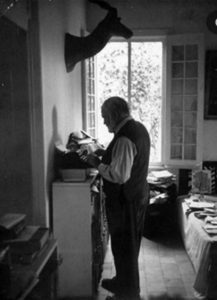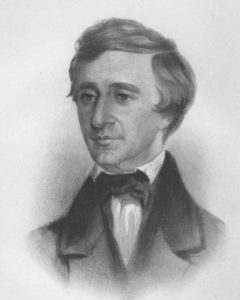[Working backward from the year 2000 toward America’s beginnings.]
The long boom
The oil shocks of the 1970s marked the end of the long economic boom that had followed the end of World War II. Or really, it would be more accurate to say “the long economic boom that had followed the coming of World War II,” for the boom began with the massive rearmament campaign that began with the war in Europe, combined with the equally massive production of ships, arms and other goods for the British and French until mid-1940, and for the British thereafter.
The Great Depression of the 1930s began to end when the allies, and our own federal government, began to order so many things, and in such quantities. Guns, mortars, torpedoes, bombs, rifles, machine guns, and the shells and ammunition they needed. Aircraft carriers, battleships, battle cruisers, cruisers, destroyers, PT boats, submarines, LSTs, amphibious assault craft, oilers, supply ships, repair ships. Bombers, fighters, reconnaissance planes for both land and sea operations. Uniforms, boots, hats, and all the thousands of kinds of items warfare requires. Merchant ships, petroleum carriers, colliers. Coal from the ground and coal transported in trains and coal loaded onto ships and sent to England.
That’s a lot of demand, and calls for a lot of manufacturing and transport, which calls for a lot of hiring of personnel, all of whom have to eat and have a place to sleep, all of whom have money reliably in pocket, some for the first time in years. Supplying their needs causes other enterprises to hire more workers, each of whom adds to demand. And suddenly the economy was functioning in high gear again, for the first time in more than a decade.
When the rearmament boom was followed by our entrance into the war, that demand became vastly greater, because everyone was working, and everyone working had money to spend. But with so much of the nation’s economic effort going toward war materials, there was no way that pent-up civilian demand could be met. Hence, rationing. You couldn’t get the things you and your family needed just by having money (if you could have done so legally, price inflation would have gone wild); you had to have ration coupons, issued by the government. So many tickets for meat, so many for dairy, so many for gasoline, for clothes, etc. It must have been galling, to have money again after so long and be unable to spend it freely. But people by and large accepted the situation as part of the cost of war. (Many heeded the government’s pleas and bought war bonds, in effect lending it their new paychecks that they couldn’t spend, earning interest in return for helping to finance the war.) When the war ended, there was all that pent-up demand, and money to satisfy it with. Under heavy political pressure, rationing was ended in 1946, and, big surprise, inflation immediately followed, as excess money drove up the price of what goods were available.
But that immediate postwar boom left people nervous. Those with longer memories recalled that a boom had followed the first world war, too, but had collapsed. Would this regained prosperity go the same way?
Well, we know that in fact it didn’t. One reason why may have been the Marshall Plan:
In the winter of 1947, there was real fear that Europe would never be able to recover, for lack of economic resources to prime the pump. First would come collapse, and on its heels – people feared – would come the Red army. But what could be done? Harry Truman called in his friend Sam Rayburn, the Speaker of the House and one of a few key power players in Congress, and told him he wanted to give the Europeans $5 billion to revitalize their economies. This was back when $5 billion was real money, being worth probably 20 times that in today’s dollars. Rayburn, it is said, turned white and said, “Harry, you’ll bust the country.” Truman said he told him, “Sam, you know I saved the country at least that much during the war,” (as head of the Truman Commission, that ferreted out corruption among war contractors) “and now I want it back.”
Truman knew full well how unpopular he was, and by now he had the well-respected George Marshall as Secretary of State, so he called him and explained the plan and asked Marshall to propose it in public, which he did in a commencement speech at Harvard in June, 1947. The European Recovery Plan – the Marshall Plan – not only saved Europe, it kept domestic demand high, a economic consequence that Sam Rayburn evidently didn’t factor into his considerations of the effects of the plan. (It also began the economic integration of Western Europe, because it forced the Europeans to cooperate – they had to present an agreed-upon list of requests, rather than each of them lobbying separately.)
The following year came the Cold War, with the fall of Czechoslovakia to the communists, followed by such factors as the unification of the three western sectors of Germany, the triumph of Mao tse-tung in China, the formation of Nato and the Warsaw bloc, etc. etc. With the Cold War came the need to be ready to fight it. More armament orders; more soldiers to feed and equip; more paychecks indirectly funded by the taxpayers. And with the advent of the intercontinental ballistic missile and atomic warheads, the need for yet more weapons, as the age of terror put the earth into greater and greater jeopardy. Jeopardy, but there was money to be made, and made patriotically.
Eisenhower (though we recognized this only inadequately at the time) as an old Army man knew all the tricks the military would use to inflate budgets, and he did as much as he could to prevent the arms race from getting out of control. But in the end the real enemy was not only the Soviet Union, or, as it was known, the Sino-Soviet bloc, but fear itself. And fear, being an intangible, could never be defeated. At best, it could be held to an uneasy draw. But in the atomic age, the risks of being caught off guard had gone way, way up.
I think that’s one of the things that got John F. Kennedy killed. He tried to bring the cold war to a lower level; ideally, to end it. (He tried, I think, via the Space Race, to redirect the economic interests that were making money on war to make money on space technology.) It scared too many people in high places, in the military, in the secret agencies, and in the “defense” industries. It isn’t the only reason he was killed, but it was probably number one, or at most number two.
After Kennedy was killed, the war boom went into higher gear than ever before, with the Vietnam war that dropped more tonnage of bombs on the jungles that the total dropped in World War II. Didn’t matter whether the bombs were dropped on legitimate targets or at random: Each bomb had been ordered and paid for, and some people were getting rich.
The oil shocks
However, as I said, the boom came to a sudden crashing halt with the oil embargo of 1973, and nothing was ever the same thereafter. For one thing, the effect on the American economy was immediate and obvious, and every country sharing the planet and resenting American preeminence took notice, and some took hope: The giant wasn’t invulnerable.
Another effect was less immediate but cut deeper, at least in the short term (by which I mean anything from 50 to 100 years after 1973) and was potentially more dangerous. This crisis was a challenge to the assumption that America would always have plenty of whatever it needed, with no need to conserve, and no innate limits to growth. This was going to be the cause of a very deep divide in the American social scene, all the more bitter because the cause was mostly unsuspected by those it divided.
Those who retained their optimism about America’s future – by brute force, if need be, rather than give up this source of their idealism – saw those who argued for limitation as needlessly crippling America by their lack of faith. These optimists, whom the other side called cowboys, saw Jimmy Carter’s energy policy as defeatism; saw attempts to curb oil consumption as subversive; saw rules such as emissions standards, fuel efficiency standards, highway safety limits, as bad-faith efforts to impose needless restrictions on the American way of life using a non-existent energy crisis as an excuse. Foreigners holding us up because we used more than we produced? The obvious answer was to drill! Drill offshore, drill in Alaska, drill anywhere and everywhere that oil might be. Restricting drilling was a betrayal of the traditional American way of life.
Opposing them were those who saw the limits to growth. Accepting the argument that on a finite planet no resource could last forever, these realist, whom the other side called many things, few of them printable, saw attempts to continue the traditional American habits of high production, high consumption as attempts to live in a past that had vanished forever. They saw dependence on foreign oil as a guarantee that we would be embroiled in foreign wars over oil, and they saw the connection between burning oil and polluting air and water. The obvious answer was to develop new sources of energy, and in the meantime control our use of limited resources.
When we talk about the social history of the 20th century, this will be one thread in the tapestry. But all this was un-dreamed of by the America that emerged from World War II as an economic colossus in a ruined world. (In 1950, half the world’s steel was being produced in the United States!) We’ve seen how the war transformed American consumption patterns; let’s jump back to the end of the previous world war to see the boom, bust, and recovery cycle that the nation endured in the two decades before World War II brought it out of its slump.

